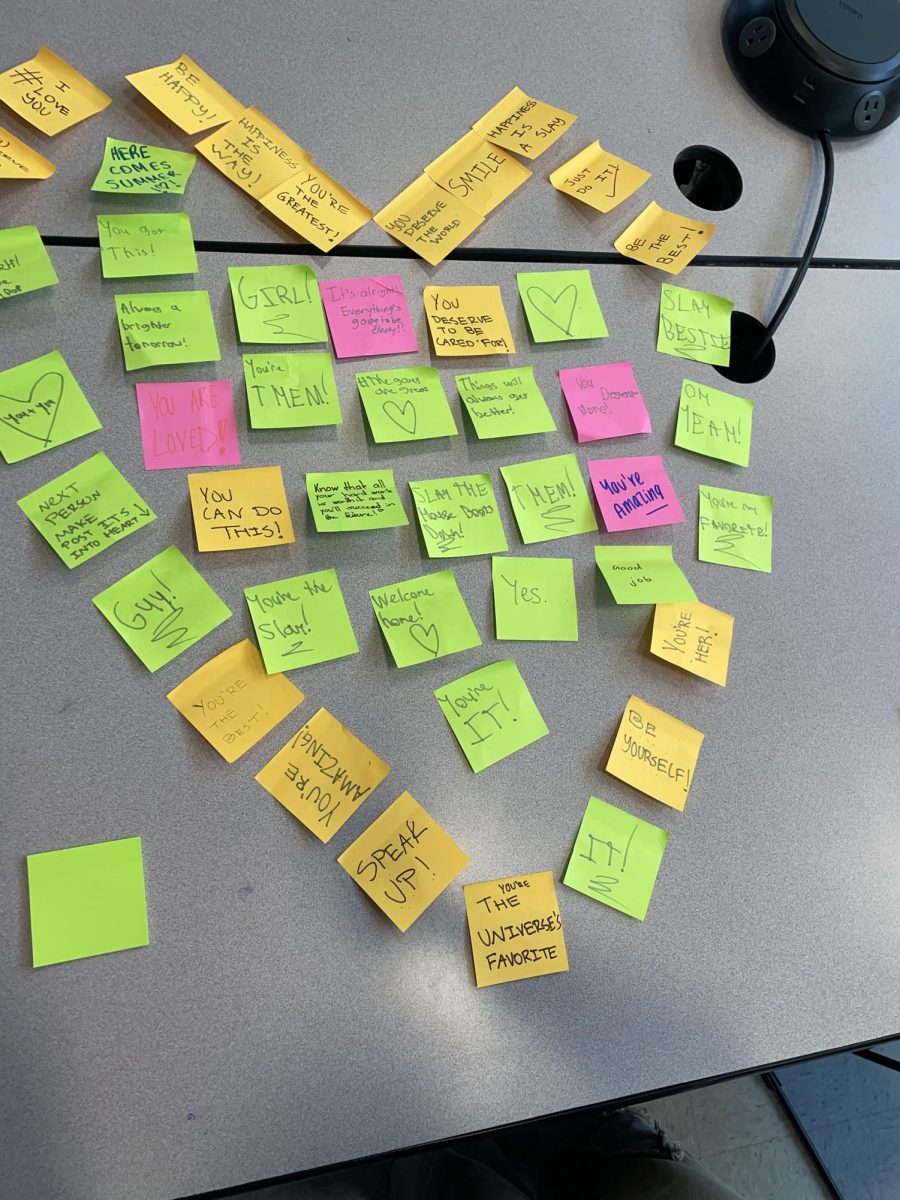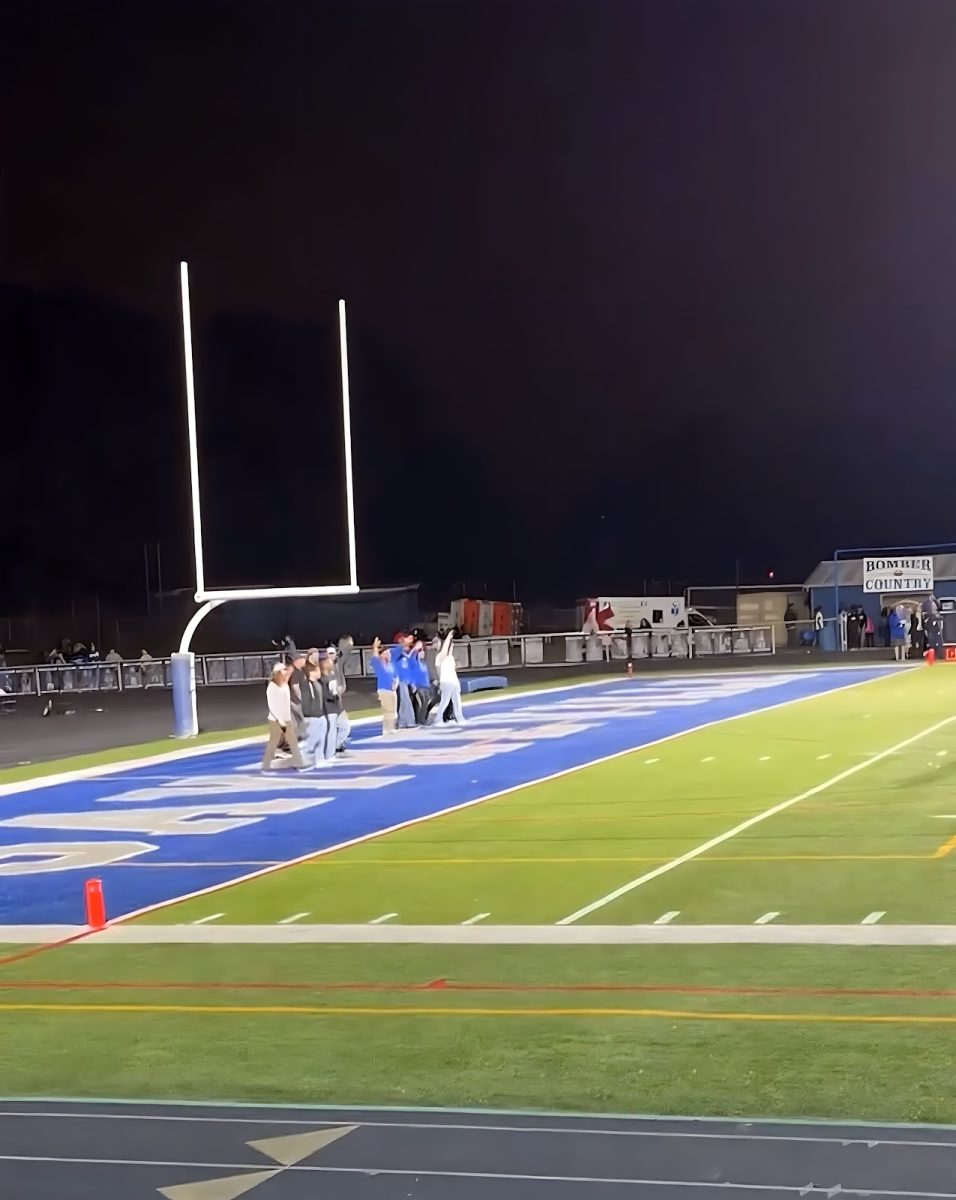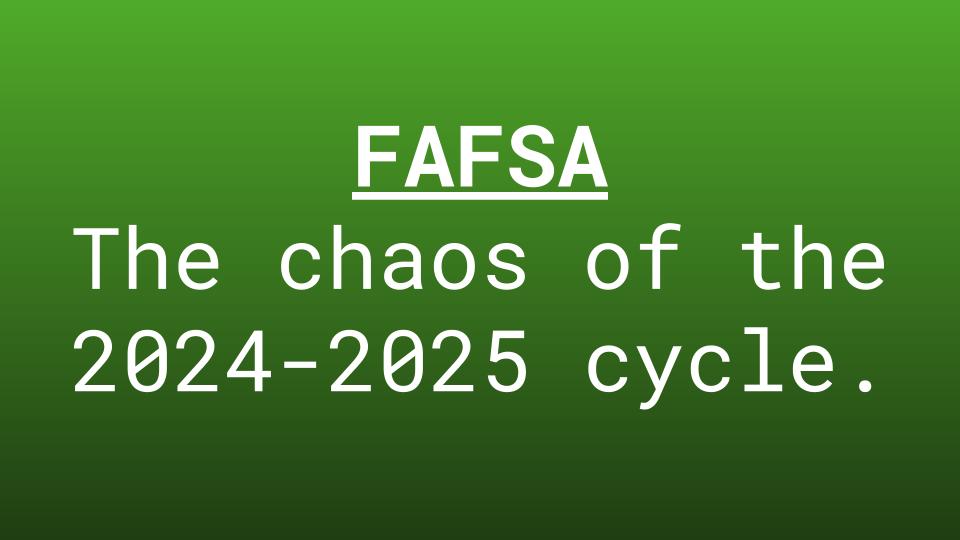For the 2024-2025 college cycle, FAFSA went under the FAFSA simplification act—to make it shorter, easier to use, and give students more financial aid. However, it has been the complete opposite, as it has been a longer process, more difficult, and there has been a decrease in students applying for financial aid.
With it’s delay of launching the application (from October to January), applying for financial aid had to be rushed. Shortly after its launch, many of its glitches have appeared, with the most significant ones being that the form sent without a signature (which means that the form is ineligible) for aid, or it wasn’t possible to add a parent as a contributor. However, these issues could not be fixed until the form was processed, which did not start until mid-March. Many students and families were extremely frustrated over the financial aid process. What was thought to be more simple turned out to be more complex, as more and more bugs were discovered every day, resulting in some forms to not be processed to this very day.
Additionally, corrections were not made available until mid-April, which brought along many more glitches. You had to be “lucky” to not receive a glitch, or else you were slowed down by the process. It’s also putting stress on financial aid offices, forcing them to push the national May 1 deadline back until mid-May or even June. Due to this, many students have not applied for financial aid (a 30% decrease), and for the 2024-2025 cycle, there has been a decrease in the amount of students committing to schools—simply due to the FAFSA. The delay in hearing back from financial aid offices delays students and families deciding on a school to attend.
The time of year that all seniors have dreamt of has turned into a chaotic mess, that is still going to this very day. Let’s hope that the next cycle, 2025-2026, is a much smoother ride.























